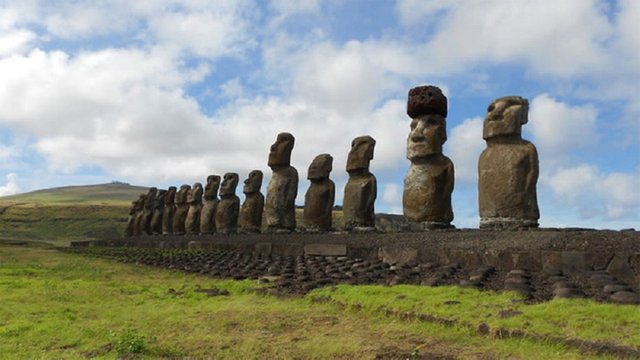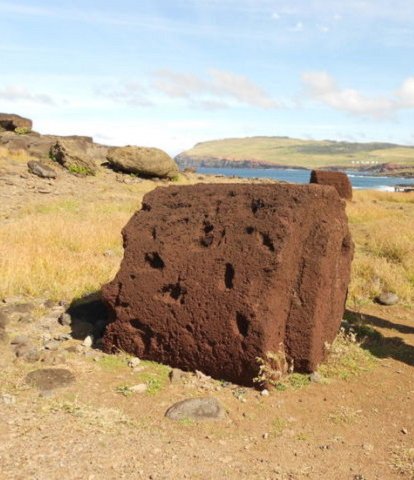
The Moai statues lined up on Easter Island. Archeologists did not understand how the ancient people covered the Moai statue with the heavy hat, which is 13 tons. However, the mystery is a surprisingly simple theory.
Easter Island, located more than 3,200 kilometers from the west bank of Chile, is one of the most remote areas where people live. It is an island about 24 km long and 12.2 km wide, but around the 13th century, a group of Polynesians was prosperous. This island also known as Rapa Nui, the height is a person-shaped stone statue sculpture is about 10 meters, Moai statue is more than 81 tons.

These stone statues are made of tuff stone obtained from a nearby quarry. In order to arrange them, the ancient Polynesians had moved the giant stone statue forward swaying to the left and right. A large "hat" is made up of red rock slag and its material is from another quarry about 12 km away. These rocks are carved at the quarry and there is a high possibility that they were rolled to a place for further processing.
But how did Polynesian builders put 12 tons of hat on a stone statue of about 10 meters? The recent findings published in the science journal suggests that the rope was used to wind up and set up the hat on the ramp (see chart below). Unlike previous attempts to unravel this mystery, the authors of this study used archaeological evidence that exists on the island to explain the argument.
In the past, some archaeologists insisted that hat was stuck on the head before the statue was straight up. However, the remains of the stone statues found on the island, which was broken or thrown away. They are said to have been worn over the erected statue. According to the researchers, Polynesians have accomplished this by using rope made of plant fiber, along inclined road, and a liner.
The lantern is a relatively simple method that is often used to raise a submerged ship. In Europe before the Industrial Revolution, it was used to raise and lower barrels on inclined surfaces. In the case of Easter Island, the rope was hung around the cylindrical hat, and the worker pulled it, so it was gradually rolled over the ramp. The number of workers required to do that work was about 10 to 15 people surprisingly as calculated by the researchers.
The fragments of red rock residue found on the foundation of the stone statue were the ones that pushed this theory. More than anything, the 50 researchers analyzed shows that there was no scratch on the bottom and it was not dragged to the prescribed position. To be accurate, hats was tilted over the stone statue. After that, the ramp was dismantled and changed to the foundation surrounding a still stone statue.
This shows that the construction of the stone statue was not expensive of labor and resources and that the plan did not require centralized power. And as this finding shows, the simplest solution is the best.
a

Interesting information! The way they decorate rock hat on Moai was really amazing! Thanks so much for sharing. ;)
Downvoting a post can decrease pending rewards and make it less visible. Common reasons:
Submit